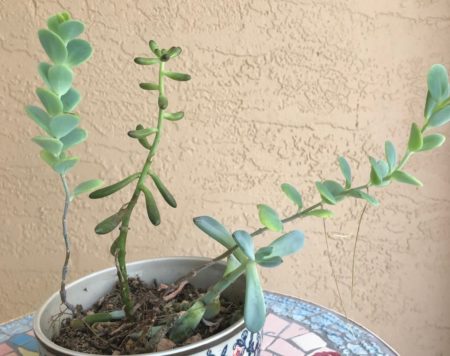Maintaining health houseplants isn’t always as easy as it seems regarding getting the balance of light just right for them. When there is not enough light or too much light, your plant will evidence it with pronounced changes in its appearance. To make sure your plants stay healthy and happy, Beneva has provided a guide for what to look for to determine if your plant is getting sufficient light.
Clues in Your Plants That It Needs More (or Less) Light
Leggy
A term that refers to skinny stems with few leaves, if your plant is leggy, it is not getting enough light. Another sign is the spacing between adjacent leaves, known as the internode. Healthy plants look lush because they have small internodes. Stems with large internodes are light-starved and do not look as nice.

Smaller Leaves
If new leaves are not growing to the size of larger, older leaves, then move the plant to a more well-lit area. Also, give the plant a turn every time you water it so all leaves get an adequate amount of sun.
Leaning
Another good reason for giving your plant a turn every time you water is to prevent leaning. If your plant is unbalanced with one side clearly stretching to reach more light, then move it closer to its light source and turn it occasionally to ensure all leaves get an equal amount of light.

Leaning Plant
Abnormal Leaf Color
Chlorophyll is what makes leaves green and is an essential component of the photosynthesis process, where light is converted into food for the plant. When there is insufficient light, the chlorophyll can not do its job suitably and the results are leaves that have turned pale green or yellow. Eventually, the leaves will fall off if the problem is not treated.
Slowed Growth
Plant growth should be obvious in healthy and thriving plants. If you are not seeing significant growth, then your plant is probably not getting enough light.
Getting the Light Right

Moving your plant to the brightest spot in your home may not be the best solution. Plants can get too much light and end up with scorched, dying leaves,. Only sun-loving varieties like cacti, palms, and succulents should be in direct sunlight for six or more hours. For most other plants, medium-light or indirect bright light is fine.
Remember , the further away you move your plant from its light source, the more the light drops exponentially in power. You may love how your corn plant looks in the far corner of a room, but if strong enough rays can’t reach it, the plant will suffer. If there is no other place to move it, then invest in a grow light enables plants to grow in any lighting condition.
Finding the appropriate amount of light for your plants may take time and patience, but as long as you pay attention to what your plants are telling you, then you will find their sweet spot.


